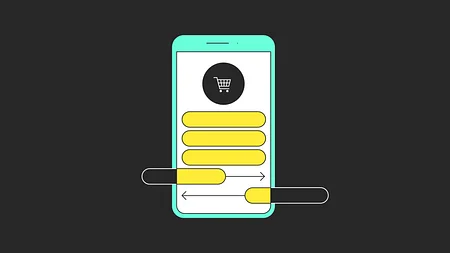Is this the start of an exodus of customers from legacy bank brands to digital-only alternatives?
Chase’s biggest competitors will no-doubt be watching with interest to see how Finn does. And so will the likes of Chime, Acorns, Moven and all the other fintechs with financial management centric offerings that Finn is pitting itself against. Until now, these players have been consumers’ go-to providers for sophisticated digital money management, while the banks struggled to deliver competitive functionality.
Finn is supposed to be in the same league as these brands, with its automatic savings options, transaction categorization and offer to let users rate how their purchases make them feel. It’s also being operated apart from the rest of Chase, enabling its team to take the
iterative approach to product development commonly used by startups. The aim is to let the Finn team take customer feedback and update the product accordingly, as quickly as possible.
The question is, can Finn deliver on its promises?
The crux of the matter is that, aside from a $100 signup bonus and an association with a big bank, Finn’s most unique feature so far appears to be allowing users to label how transactions made them feel. That’s incredibly easy for others to copy, while its core tools are hygiene factors for its startup competitors. And it’s not tools, or for that matter a legacy brand and signup bonuses, that keep customers loyal, engaged and consequently revenue generating.
A large part of what inspires loyalty to startups in this space is their ability to deliver “soft” benefits that create a good user experience without the customer having to go to a branch or speak to someone on the phone. Done well, it requires transparency, communicating in simple language, and admitting when things have gone wrong and why. These factors apply to customer service too. Having staff available 24/7 as Finn promises is all well and good, but if they can’t help customers because they don’t know what’s gone wrong themselves or they have to stick to a script, then they just become a huge cost burden. Whether Finn can align itself with the startups' customer service culture remains to be seen.
Loyalty, and ensuing engagement, are hugely important because they are key to how startups in this space make money, a consideration that surely also applies to Finn. Significant income is rarely made on deposit volume, instead fintechs require the addition of revenue from partnerships, effective cross selling and value added services to keep going.
Very few customers are going to use a new account as their primary one, straight off the bat; the majority of those attracted to money management centric offerings already have somewhere to store their money. Instead, they are looking for a personal assistant to help them make the most of their income, including helping them find the highest returns on savings and investments. For context, Finn is offering interest rates of 0.01%-0.04% on savings while
Marcus is offering 1.8%.
Finn is not going to spark a revolution
Finn has a long way to go before the quality of its offering is over and above the likes of Simple, Chime and their European peers like Monzo and N26. Customers will be attracted to the signup bonus, and a few will come for the novelty, but it’s hard to believe these customers will use their accounts in the way Chase would like — they are unlikely to completely switch to Finn, hold significant deposits or develop any sense of emotional attachment to the brand any time soon.
For Finn, and its upcoming competitors from Citi and Wells Fargo, to cause a significant change in customer behavior will require them to offer something completely different. That will likely involve shifting their thinking away from how to use digital services to gather as many deposits as possible and instead to consider how technology can deliver entirely new services that better meet customers’ needs. It’s possible they will get there, but I’m not holding my breath.
You can read my research reports and see user journey video and images from leading financial services brands
here.
This article was first posted on Forbes.com where you can find more articles contributed by Sarah Kocianski in the near future.



